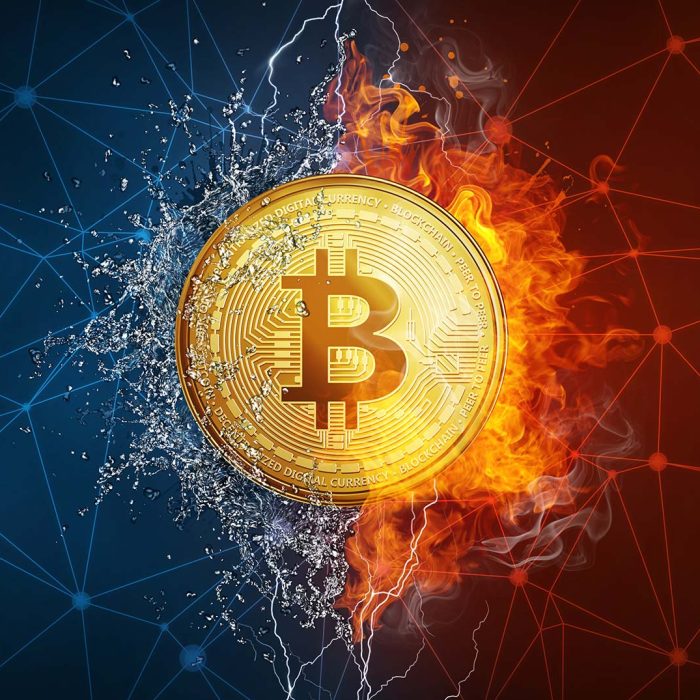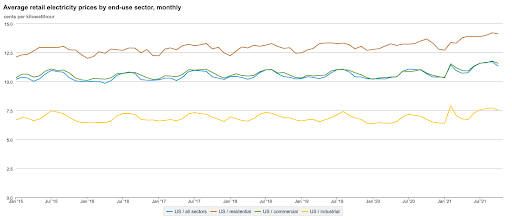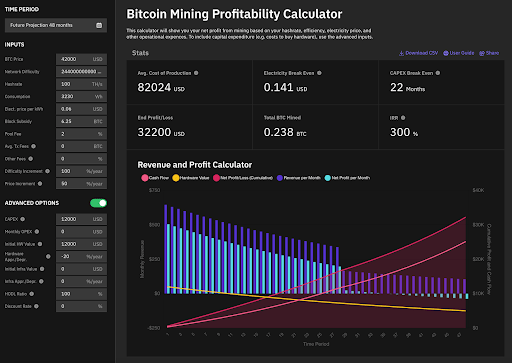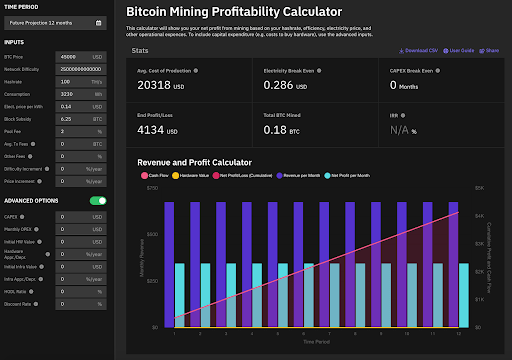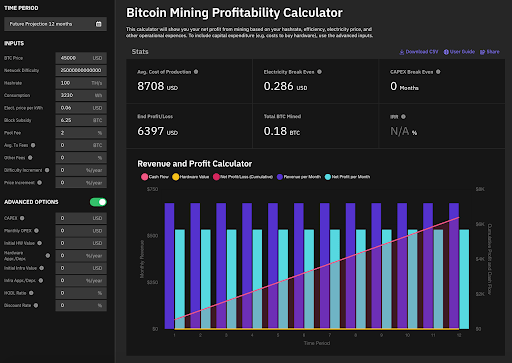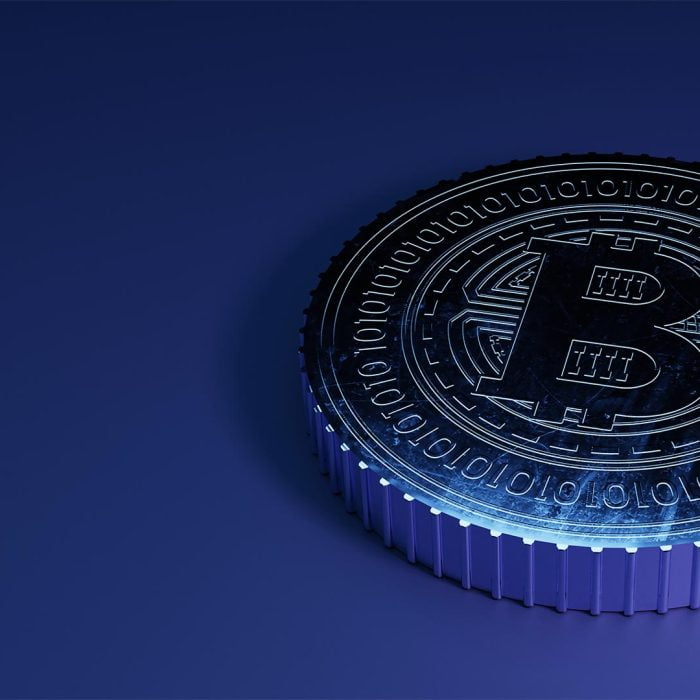Yet, despite the higher electricity prices, the home miner still has options that could drastically help them mine. An excellent option for anyone seriously interested in Bitcoin mining, from home mining to large scale operations, is to find a bitcoin miner hosting provider, such as our Managed Mining Program. With Managed Mining, we mine using environmentally conscious electricity (surplus wind power + traditional grid power) priced at 4.2 cents/kWh so our clients can enjoy the highest profits possible.
Not only do we house your mining rig in our highly advanced mining POD infrastructure, we also monitor and manage it 24/7. Since we are responsible for your machines, we provide free replacement parts should anything go awry with your mining hardware. Our goal is to create a frictionless mining solution accessible to all while maximizing your profits.
Breaking Even After Capital Expenditures
To make Bitcoin mining as worthwhile as possible, most miners set out with the goal to break even on capital investments as soon as possible.
However, projecting the profitability of a Bitcoin mining rig is a bit more complicated than simply accounting for upfront and overhead costs. Two major influences on mining profitability are the price of BTC and network difficulty. For differing reasons, both factors are susceptible to fluctuations. Fortunately, we have tools at our disposal that can help us project profitability during growth and decline periods.
To further understand the effect BTC price and difficulty can have, let’s look at some basic capital expenditure break-even simulations. We’ll use a Mining Profitability Calculator to estimate when you would break even on an investment given different scenarios.
For each calculation, our analyzed mining rig will be an Antminer S19 100Th that we’ll run for 4 years, with a stable electricity price of 6 cents/kWh. Our starting difficulty will be 24.4T, and our starting price will be set to $42K. Also our CapEx will be $12,000 (price of the Antminer S19), but will depreciate at 20%/year. And our HODL ratio will sit at 100%.
*[The Antminer S19 100Th has a maximum hash rate of 100 Th/s, power consumption of 3230W±10%, and power efficiency of 32.5 W/Th]
Bearish S5cenario: Difficulty increases 100%/year, and BTC only increases 50%/year
BTC Price
Another key component Bitcoin miners must be aware of is Bitcoin’s price. It’s likely true that if you are a miner, you’re going to be bullish on BTC price, and expect “Number go up!” over time. While Bitcoin’s historical numbers show a compounded average growth rate of 197% per year, the price can be unpredictable, especially in the short term.
BTC price can be volatile with large swings in either direction at any point. That’s why it’s good practice to first be conservative and model your mining business as if BTC price will not increase over time while difficulty does. Modeling like this helps you decide if you would be comfortable during a “bearish” scenario.
Other useful perspectives to consider can be found when analyzing events where price and difficulty increase roughly proportionately, or when price increases faster than difficulty does. How do these scenarios affect your outlook on mining in the long term? In our article Why Bitcoin ASIC Prices Can Reach New Highs In 2022, we took a deep look at why difficulty and BTC price not only affects profitability but also ASIC (mining hardware) pricing.
For a more straightforward approach, a great tool is the Bitcoin Mining Profitability Calculator from Braiins. With this calculator, you’re able to adjust the difficulty, BTC price, ASIC pricing, electricity prices and more to predict profitability over time. Which brings us to the next factor in Bitcoin mining.
The Price of Electricity
One of the top priorities new miners have is to find and utilize a cheap source of energy. This is because Bitcoin mining machines tend to soak up lots and lots of power, making energy costs the majority of a miner’s operational expenses. To minimize energy expenses, miners try to find the cheapest energy source possible to allow them to be more competitive in the long-term.
The average cost of electricity (residential) in the United States is $0.14/kWh. The cost per kWh most miners feel competitive at is about $0.06/kWh or less. Of course, mining can still work at higher electricity prices, but a greater energy cost means more risk. Our Managed Mining services operate at roughly $0.042/kWh, thanks to our green and renewable energy sources.
But to better understand the impact of energy costs, let’s take an example. One of the best selling mining machines, the Antminer S19, has a maximum hashrate of 100 Th/s, power consumption of 3230W±10%, and power efficiency of 32.5 W/Th. Using the Profitability Calculator mentioned above, we’ll calculate the differences in operating expenses for one year for residential and industry standard electricity prices. For simplicity’s sake, we’ll calculate using a constant network difficulty of 25T, and BTC price of $45K.
Electricity Price : $0.14/kWh
Clearly, the price of electricity has a massive effect on the risk a miner takes on, even when running just one machine! Despite the unrealistically frozen difficulty and BTC price inputs, the average cost of production for 1 BTC is reduced by $12k, leading to over $2k higher-end profit for the operation with $0.06/kWh electricity.
The other common source of OpEx for mining operations is labor. However, on a per-machine basis, labor is likely an insignificant expense compared to electricity costs.
